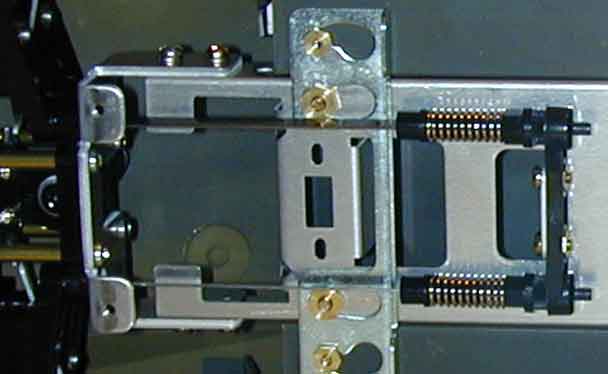
Tamiya XR311
The XR311 and the Cheetah was released by Tamiya in the 70s. Its concept was quite ahead of its time back then. Most R/C cars were simply a fiberglass board with a motor mount and two upright for the front steering wheels. Bolink even went as far as turning the chassis upsidown and call it an off-road vehicle with the extra clearance. Tamiya true to its reputation for detail created the XR311 with 4 wheel independent suspension.Gearing can be changed with 3 different ratios. The ride height can be adjusted via the torsion bars just like in a real vehicle.
As advance as the XR311 was on paper, several issues kept it from being a pracitcal racing vehicle. For one thing, the suspension was held up on plastic torsion bars. That is correct, the car did not use any metal coil springs like most all vehicles today or a wire torsion bar like on a Sand Scorcher. Rather, it used a plastic spring that was broken off from the parts tree. The kit did include two extra plastic springs in case of breakage. The plastic spring however does have the advantage of providing a slight bit of damping due to the inherent properties of plastics to absorb shock.
Another problem was with the steering pushrods, it is non adjustable. The linkage is simply a wire with two eyelet on both ends of it to hook onto the control arm on the steering wheel and the steering crank arm. Althought Tamiya made the parts to be very precise so that no adjustment is necessary. With just one crash of the car, the wires will be bent. In the small space available, it would be difficult thought not impossible to retrofit an adjustable mechanism.
The driveshaft was also quite delicate. It is made up of brass and plastic components. It does not look like it will hold up to much abuse. The suspension although independently sprung, is also very soft. The vehicle would lean too much in turns. The suspension pieces also looks quite delicate.
Overall, it is hard to imagine what the creators had in mind when Tamiya made the XR311. Obviously, they were the first to come up with an sophisticated off-road vehicle. There were no racing events back then to design for. It seems like the XR311 is a cross between a scale model that is for display only and an RC car. Tamiya made their fame on very accurate reproduction of scaled military vehicles and racing cars. This car is simply a scale model that can be driven. The soft suspension made it look realistic in turns, and the delicate suspension pieces simply looked more scale than the modern race cars. It is also one of the few rare RC cars that include a full figure and a full height cockpit. It is quite enjoable to drive the car around simply to see its suspension move and the detailed body.


The plastic torsion springs are shown above. The coil springs are not an active part of the suspension. The plastic torsion bar is held by a plastic piece with splines on the end of it, which engages the suspension fixed mount. The coil springs are there to ensure that the splines do not back out of the fixed mount. To adjust the ride height, compress the coil spring to disengage the splines from the fixed mount, and rotate the torsion bar the necessary amount, then allow the coil springs to force the splines back into the fixed mount.

Metal torsion bars replace the plastic pieces in the reproduction.